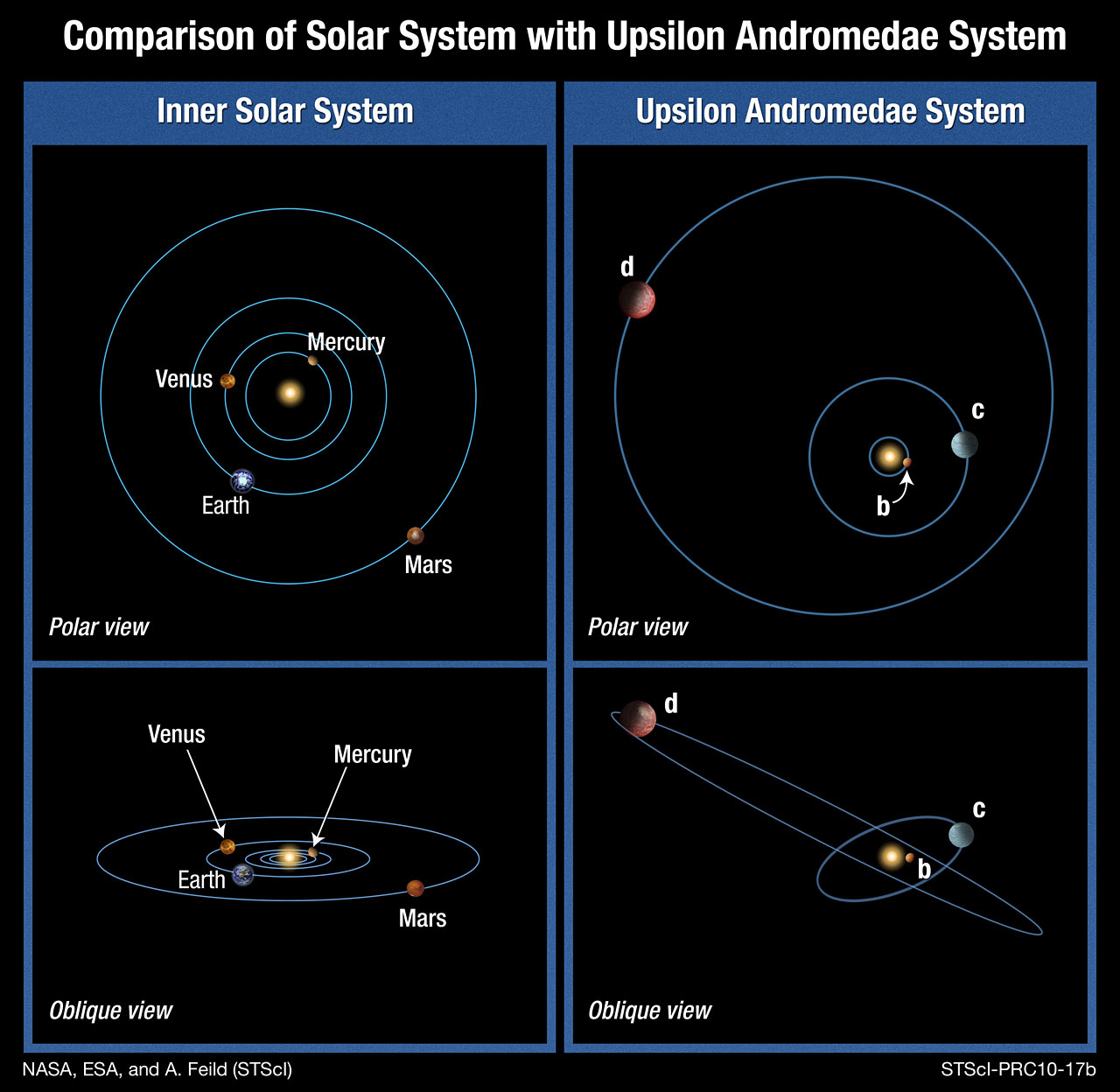Properties of
Extrasolar Planets
Determining the properties of extrasolar planets is much like being
asked to determine what sort of metal a needle
in a haystack is made out of, while wandering through the cornfield of
a neighboring farm. However, some
methods exist to determine barebone properties.
First, when a planet is in transit with its star, the task becomes
immensely easier. Direct estimates of masses and
radii can be determined through measuring the loss in luminosity.
Astronomers
can also determine more about the
atmospheres of these locales. However, even without transiting, many
properties can be measured or at least
guessed.
But even without this, many things can be determined. The way that a
planet pulls on its star can reveal the path of
its orbit, from the distances to the eccentricities. The equation "m
sin(i)" can be used to determine the minimum
mass of any planet, however, the flaw is that each must be calculated
as if it were by itself, even if other planets are
present. This also helps determine radii and thus gravity. Kepler's
third law ("The square of the orbital period of a
planet is directly proportional to the cube of the semi-major axisof
its orbit") can be applied as well.
